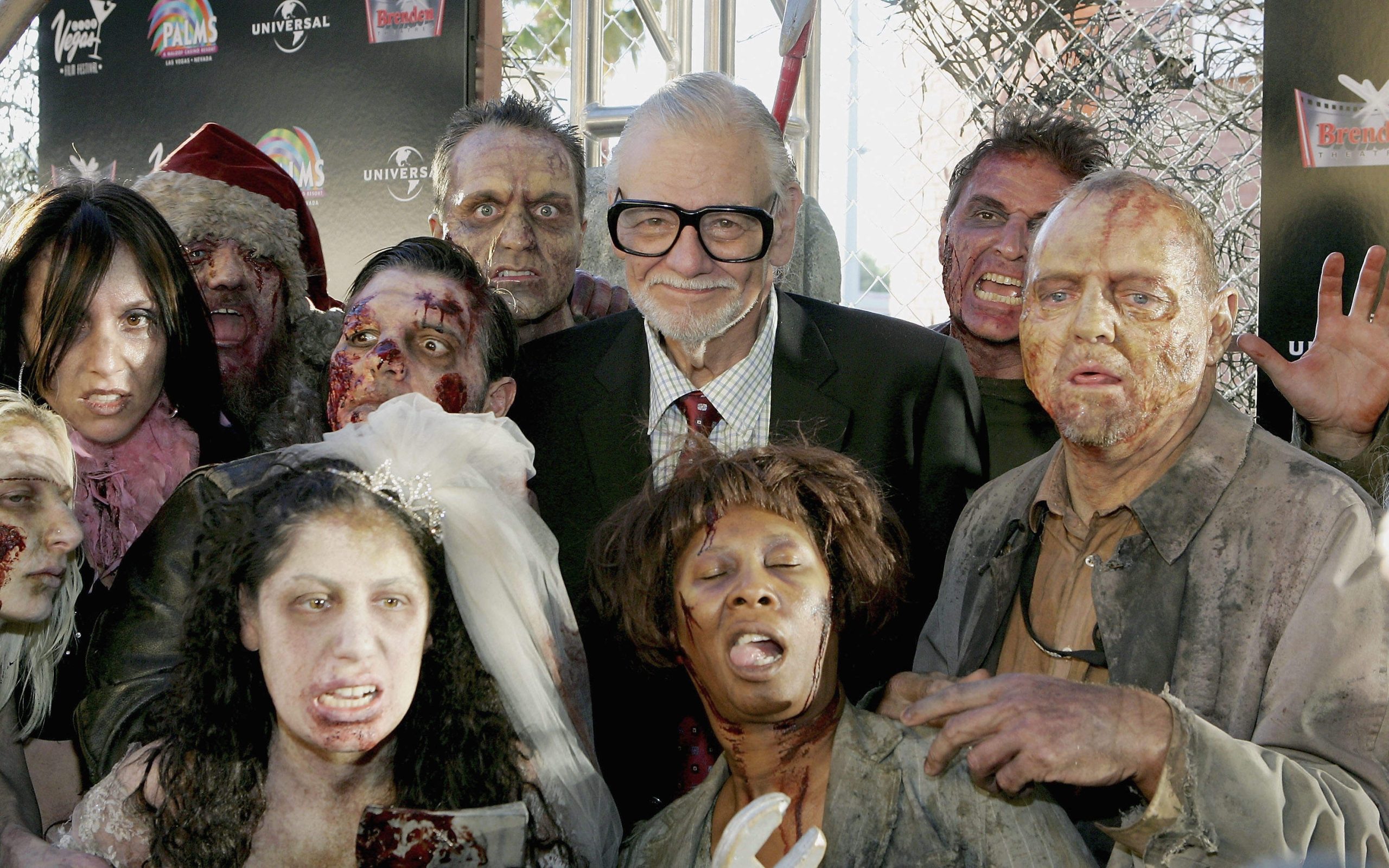
Few artists of any kind can be said to have created a genre. Filmmaker George Romero, who has died aged 77, was one such artist. Romero’s Night of the Living Dead (1968) is universally acknowledged as the first modern zombie film, although the term is not used in the film itself. Romero’s Zombies, living dead humans, motivated by a need for human flesh, are a science fiction concept, distinct from both the creatures of Haitian folklore from whom they took their name, and the magically resurrected henchmen who had featured in earlier horror films.
Romero’s picture, which has spawned two remakes and five sequels, as well as countless imitations in numerous media, established the idea of a “zombie apocalypse”. An event after which hordes of the creatures mindlessly hunting the few survivors of the cataclysm that had created them. It also introduced the conceit that said hordes had to represent something. That they would be a grand metaphor of some kind. In, for example, Dawn of the Dead (1978) the action takes place in a deserted shopping mall, and the resemblance between the stumbling zombies and the shoppers who once filled the place forms part of Romero’s critique of consumer capitalism or, if you prefer, of mindless consumption.
Romero had, perhaps ironically, perhaps not, cut his filmmaking teeth on commercials. Nevertheless, he was an eclectic young man with a passionate interest in film and its history, and he always intended to start making distinctive features for the cinema. More, he was prepared to use unorthodox methods, and risk his own money, in order to do it. Night of the Living Dead was made for a vanishingly small sum, by a company owned by Romero and several friends, and shot in the vicinity of Pittsburgh, where they’d attended Carnegie Mellon University. It took tens of millions of dollars before the end of the sixties and is now seen as having put American Horror films back on the map, after more than a decade in which European filmmakers had dominated the genre.
Interviewed by Mark Gatiss in 2010, Romero commented that with Night he and his collaborators “… decided from the beginning that we were going to push the envelope a bit, that we weren’t going to cut away”. The film pushed the envelope in other ways too. Its lead actor, Duane Jones, was African American. Romero acknowledged this as “damn near a complete accident, [he] was the best actor from amongst our friends”, but the casting gave the picture, already imagined by Romero as expressing “anger that ‘peace and love’ had not worked,” that the Sixties had failed, extra resonance which was exploited in shooting and editing.
This is never more powerfully true than when, in the film’s final moments, its lead is killed by a redneck who cannot distinguish between Jones’s character and zombie he has spent the film fighting. In a horrid irony, Romero and Jones were driving the first ever print of the film away from their editors, when they heard on the car radio that Martin Luther King had been murdered. It’s the film’s curiously accurate portrayl of the zeitgeist, not its unflinching violence, that has meant that, despite initial sniffy reviews, Night came to be seen as important American film, and in 1999 it was declared “culturally, historically, and aesthetically significant” by the United States Library of Congress.
Romero made other films, aside from the six installments of his “the Dead” series (a seventh, which he had written but did not intend to direct, was in production at the time of his death). Perhaps the most immediately successful was the Stephen King-scripted black comedy Creepshow (1982), a homage to EC Horror Comics of the 1950s, which was very distinct from earlier, largely British attempts to film them. Martin (1978) though is Romero’s non-zombie masterpiece. Seized as “obscene” during the UK’s “video nasty” panic of the early 1980s, it’s the lyrical story of a dangerous young man who may, or may not, be a vampire. As with “the Dead” films, the story’s currents run deep, the film is a showcase for concerns about the behaviour, and treatment, of young men and of the dangers of romanticising certain behaviours, and of toxic masculinity. Romero’s reported favourite of his own films, it demonstrates how far he could move from his signature series while remaining within a single genre and his own style. Martin, like “the Dead” series remains profoundly influential, even on people who have never seen it, only its imitators of which, again, there are so many.
George Romero died surrounded by friends and family, after a short battle with cancer, listening to the soundtrack to John Ford’s 1952 film The Quiet Man. His work, and his ideas, walk among us yet. Undead undead undead.





